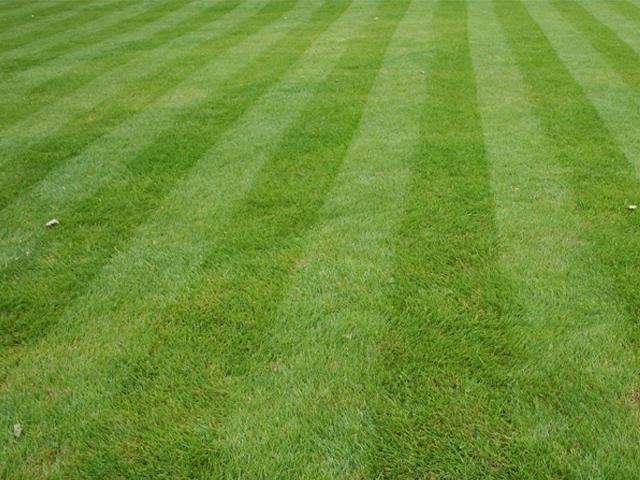Stripe your lawn like a pro
08 Feb 2018

You know what we’re talking about – that striped patchwork of greens that makes a lawn look a million bucks! Who wouldn’t want a property on par with a precisely and professionally manicured sports field? Well, with just a little effort and simple equipment here’s how you can make it happen… plus a few extra tips to get your lawn in excellent condition.
How striping works
That striped effect is just a trick of light. The different ‘colours’ are made by the way the light reflects off the blades of grass depending on which way they’re bent; those bent towards you are darker than those bent away from you.
Land, lawns and gardens - get the essentials on maintaining a great lifestyle block. Download your free guide now.
Equipment needed
You might have noticed you end up with a similar look just from regular mowing. Striping takes it up a notch. To create those patterns you need to manipulate the way the blades of grass bend. To achieve this you can either buy a special striping kit or try to build one yourself. In it’s most basic form, a striping kit is a roller or bar on the back of the mower that tamps down the grass, bending all the blades in a uniform direction.
Grass type and conditions
Striping works best on cool season grass types such as fescue, ryegrass or browntop. The thicker it is the better the effect, and the longer the grass the more vivid the pattern. Mowing higher creates softer grass that bends over easily meaning there’s more blade surface reflecting the light.
Practice straight lines
Mowing a perfectly straight line might sound like an easy task, but just like anything, practice makes perfect. To get as straight a line as possible, either start in the corner and use fence lines to guide you, or, if your lawn is an odd shape, start by mowing one straight line down the middle and use this to guide the rest.
To keep mowing straight, rather than looking at the ground right in front of you, keep your eyes on the lawn about three metres in front of you.
At the end of a row, lift the mower deck as you turn so you don’t create large circular mow patterns.
For a really nice finish, mow a solid strip right around the edges.
Double cut/criss-cross
Straight lines are only one pattern. Some people will also do diamonds or a checked pattern. To achieve this, mow it once to get a set of nice up and down stripes, then go over it again diagonally for that really attractive criss-cross. Maybe even lower the deck a centimetre or so (not too much) for this final pass over. It takes a bit longer but the fantastic end result is worth it.
Extra tips for lush lawn growth
Striping looks best on a thick, lush, green lawn so here are some extra tips to get it growing:
- Always mow with a sharp blade for a nice, healthy cut. A dull mower blade shreds the grass creating ragged edges that go brown.
- Trim less but more often; aim for grass about 3-5cm in length and never cut more than 1/3 of the grass height each time.
- Fertilise every 4 to 5 weeks during spring and summer. Use a fertiliser spreader to ensure an accurate and even dose.
- Check your soil has a pH level of 6 - 7.2 for thriving grass.
- Water deeply but sporadically in summer, ideally in the early morning.
- Scarify in spring or autumn; cutting or raking out thatch (a layer of living and dead grass that develops between the soil and the blades) helps improve the fresh air and light supply to the lower leaf and root system.
- Aerate with a garden fork, poking holes in the lawn every 10cm to improve air flow to the roots.
- Check out our range of Ryan turf renovation equipment to really get your lawn in tip-top shape!
For more handy lawn and garden tips, download our free maintenance guide